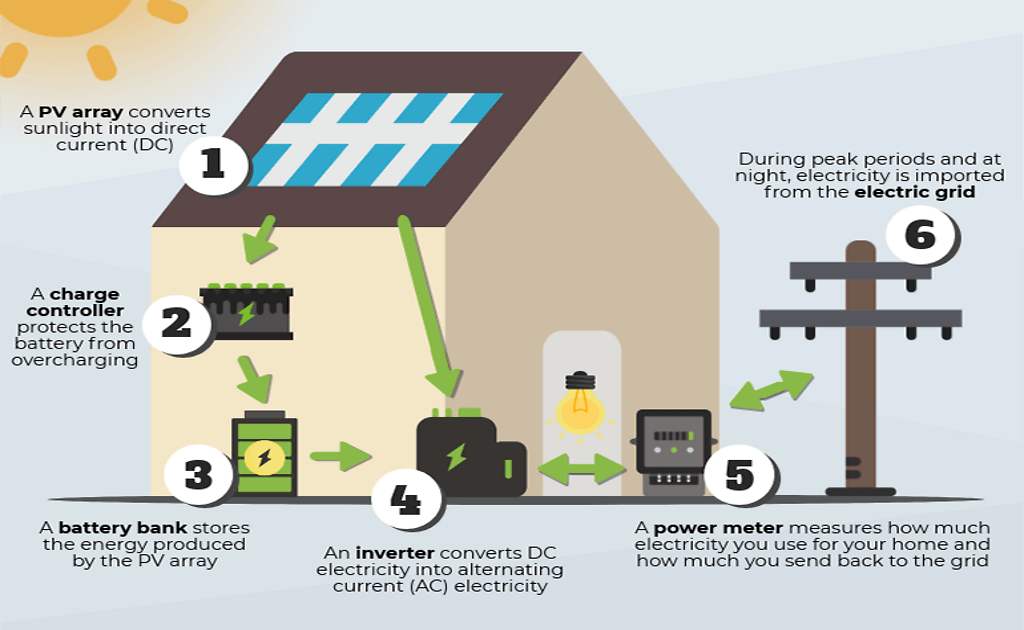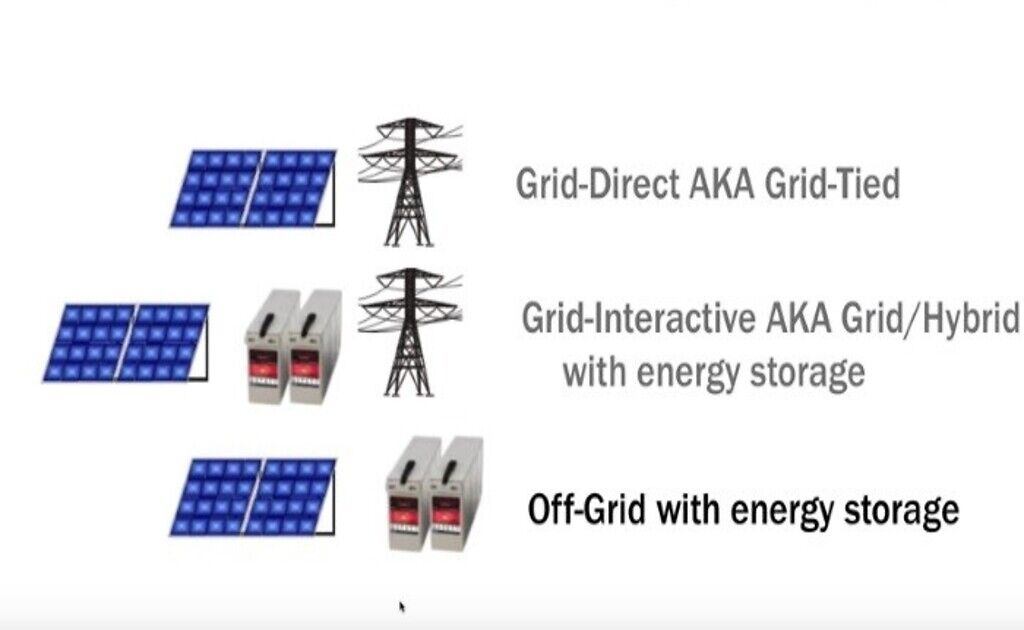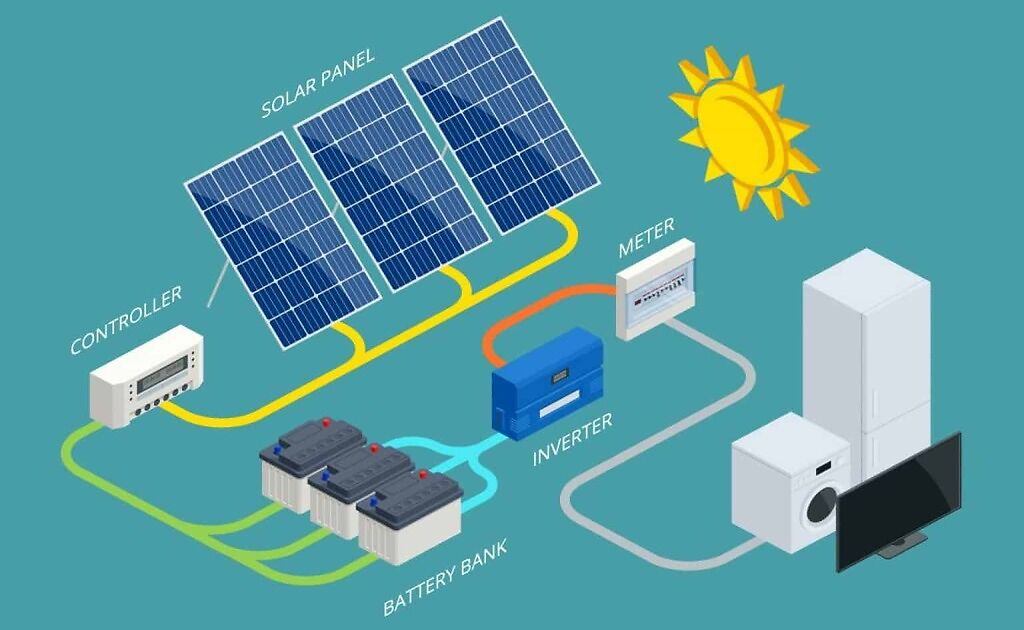What Are The Basic Components Of The Photovoltaic System?

What Is A Photovoltaic System?
A photovoltaic system, also known as a PV system or solar power system, is an electric power system that uses photovoltaics to generate usable solar power. It is made up of several components, including solar panels to absorb and convert sunlight into electricity, a solar inverter to convert the output from direct to alternating current, and mounting, cabling, and other electrical accessories to complete the system. It may also include an integrated battery and use a solar tracking system to improve overall system performance.
PV systems convert light directly into electricity and should not be confused with other solar technologies used for heating and cooling, such as concentrated solar power or solar thermal. A solar array only includes the visible part of the PV system, the solar panels, and does not include all of the other hardware, which is often referred to as system balance (BOS). PV systems range in size from small rooftop-mounted or building-integrated systems with a few to several tens of kilowatts of capacity to large utility-scale power plants with hundreds of megawatts of capacity. Most PV systems are now grid-connected, with off-grid or stand-alone systems accounting for a small percentage of the market.
PV systems have progressed from niche market uses to a mature technology utilized for mainstream energy generation, running silently and with no moving components or environmental pollutants. These systems are built and plotted utilizing technologies such as solar pv system design software. Over a 30-year service life, a rooftop system recoups the energy spent in its construction and installation within 0.7 to 2 years and provides roughly 95 percent net clean renewable energy.
How Does The Photovoltaic System Work?
Solar photovoltaic (PV) panels capture the sun's energy and convert it into electricity using cells made of a semiconductor material. Silicon, a plentiful natural resource found in sand, is the most commonly used semiconductor material. When light strikes the cell, a certain amount of energy is absorbed by the semiconductor material, knocking electrons, the negatively charged particles that serve as the foundation of electricity, loose.
Most PV cells contain two semiconductor layers, one positively and one negatively charged. When light strikes a semiconductor, an electric field at the junction between these two layers allows electricity to flow, resulting in direct current (DC). We may take that current off for external usage by installing metal connections on the top and bottom of the PV cell.
Solar PV electric panels do not require intense sunshine to work, so you may create power even on gloomy days; nevertheless, the larger the intensity of light, the greater the flow of electricity. However, because of the reflection of sunlight, days with a small cloud can produce more energy than days with a fully clear sky.
It is critical to understand that you can only use your free solar electricity when it is being generated, which means that unless you also invest in batteries to store power for use in the evenings and at night, you will have to pay for your energy use as usual when the panels are not producing electricity.
What Are The Types Of Solar PV Systems?
Over the last several years, the scope of solar photovoltaic (PV) systems has expanded tremendously. A photovoltaic (PV) system is made up of semiconducting materials that turn sunlight into electricity. As a result, PV systems are becoming increasingly popular for solar applications. The manner in which a solar PV system is linked to other power sources and their component configurations is determined by functional and operational standards.

Solar photovoltaic systems are classified into three types:
Grid-tied systems: The most popular form of solar system; the home is linked to the grid so that it may utilize utility electricity when the solar panels do not produce enough energy to power the home.
Off-grid systems: They have no grid connection and rely only on energy generated and stored on-site.
Hybrid systems: Hybrid systems, often known as 'solar-plus-storage systems,' combine solar panels with a solar battery to store energy for later use or during a power outage, and the house is also connected to the grid.
What Are The Components Of A Solar Photovoltaic System?
Solar PV modules:
A solar module is made up of several solar cells having semiconductor qualities that are enclosed within a material to protect them from the elements. These characteristics allow the cell to catch light, or more particularly, photons from the sun, and transform their energy into usable power via a process known as the photovoltaic effect. A layer of conducting material "collects" the electricity created on each side of the semiconductor. The lit side of the screen also has an anti-reflection coating to reduce reflection losses. The vast majority of solar panels manufactured across the world are composed of crystalline silicon, which has a theoretical efficiency limit of 33% for turning the sun's energy into electricity. Many additional semiconductor materials and solar cell technologies that function at higher efficiencies have been discovered, but they are more expensive to manufacture.
Module Junction box (weather proof), where the module terminals shall be interconnected and output taken, shall be designed for long life outdoor operation in harsh environments as per the relevant BIS specifications and protected against surges. It should have a provision for “Opening” for replacing the cable, if required.
Modules shall be North –South oriented at the Tilt Angle of 11 -13 degree.
PV modules used in solar power plants must be warranted for output wattage, which should not be less than 90% at the end of 10 years and 80% at the end of 25 years.
Module Mounting Structure:
The PV modules will be installed on permanent iron structures of sufficient strength and design to handle module loads and strong wind speeds of up to 150 km/h. The power plants' support structures will be hot dip galvanized iron (G.I).
The mounting structure should have the following characteristics:
• The modules support structure shall be Mild Steel /hot dipped Galvanized (at least 120 micron) Iron for holding the PV modules. The size of angle iron should not be less than 50x50x5 mm.
• Each panel frame structure shall be so fabricated as to be grouted on the roof on its legs. The legs of the structure shall be fixed and grouted in the PCC foundation column made with 1:2:4 cement concrete. The foundation shall support SPV modules at a given orientation, absorb and transfer the mechanical loads to the ground properly and shall withstand a maximum wind speed of 150 km/hr.
• All nuts and bolts should be made of good quality Stainless Steel.
• The structure should be designed to allow easy replacement of any module.
• The array structure shall be so designed that it will occupy minimum space without sacrificing the output from the SPV panels.
• The minimum clearance of the lowest part of the module structure and the developed ground level shall not be less than 500 mm.
Inverter:
An inverter is a type of electrical equipment that absorbs direct current (DC) and transforms it to alternating current (AC) (AC). In the case of solar energy systems, this implies that the DC current from the solar array is sent via an inverter, which transforms it to alternating current (AC). Most electric equipment and interfaces with the electrical grid require this conversion. Inverters are essential components in virtually all solar energy systems, and they are often the most expensive component after the solar panels themselves.
The majority of inverters have conversion efficiencies of 90% or above and significant safety features such as ground fault circuit termination and anti-islanding. When there is a power outage, this shuts down the PV system.
Battery Bank:
A battery bank ensures that no excess energy is wasted by storing the energy produced by the PV array and not immediately consuming it. It can then, for example, provide energy to your home at night or during very overcast weather when there is inadequate sunshine.
It is optional to include a battery bank in your photovoltaic systems, but it can increase the quantity of solar energy you can consume. Your home will be able to utilize 80 percent of its generated energy with a battery system, but without one, this would be only 40 percent.

Charge Controller:
Charge controllers regulate the DC from solar panels to prevent the batteries from overcharging. A charge controller may detect when the batteries are completely charged and halt the current flow to protect the batteries from harm. Because not every photovoltaic system includes a solar battery bank, a charge controller is not always required. In other words, if you have a battery bank, you don't require a charge controller.
DC & AC Switches
DC SIDE:
- MCB of suitable rating shall be provided for connection and disconnection of array & PCU for maintenance purpose.
- Switches and Circuit Breakers on the DC side shall be DC rated or they shall be sufficiently de-rated, if AC rated switches are used.
AC SIDE:
MCB of suitable rating is provided for connection and disconnection of PCU & load.
Cables and accessories:
All the cables shall be supplied conforming to IEC 60227/IS 694 & IEC 60502/IS 1554 shall be of 1.1 kV grade as per requirement. Only PVC copper cables shall be used.
The size of the cables between array interconnections, array to junction boxes, junction box to PCU, PCU to AC Distribution Box etc shall be selected to keep the voltage drop and losses to the minimum. Permissible Wire Drop on DC side shall be <= 1%
Advantages Of Solar Photovoltaic Systems:
- Solar PV systems may be created for a wide range of applications and operating requirements, and can thus be tailored to your specific needs. There are both residential and commercial solar panel sizes.
- Once correctly installed, your solar PV system will require very little maintenance. Furthermore, their dependability and energy independence will provide you with a lifetime of electricity generation.
- Solar PV systems provide sustainable power generation since they use a natural resource (sunlight) and produce no noise or pollution.
- Since photovoltaic systems are modular, they are simple to expand and, in some situations, move.
- Although solar panel installation prices are significant, it is crucial to remember that a solar PV system will save your power bills in the long term because it is free to run.
- In conjunction with an electric boiler, the power generated by the solar PV system may also be utilized to provide heat. Alternatively, if you want to include solar thermal energy into your house, check into solar water heating as well.
Conclusion:
Using solar energy to power your house can be easier than you think, whether you build your own solar panels from scratch or buy pre-made commercial panels. With a grid-connected system, you may even sell excess power back to the utility company that has been supplying it to you for years, earning you extra money.

